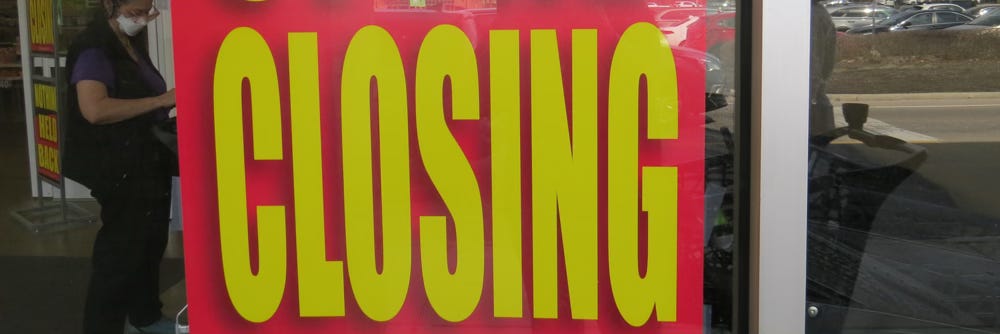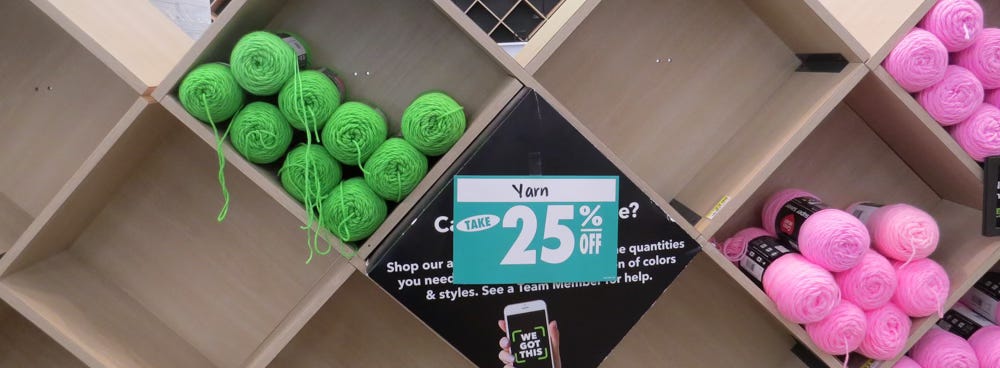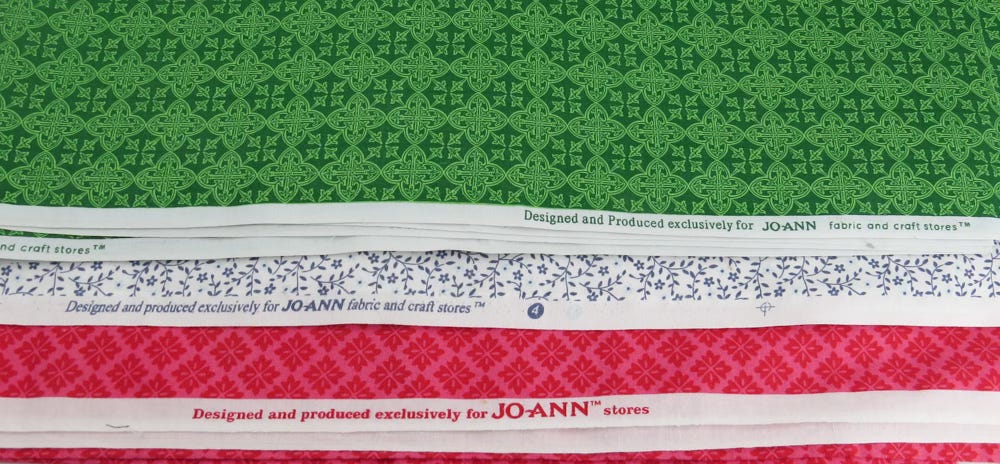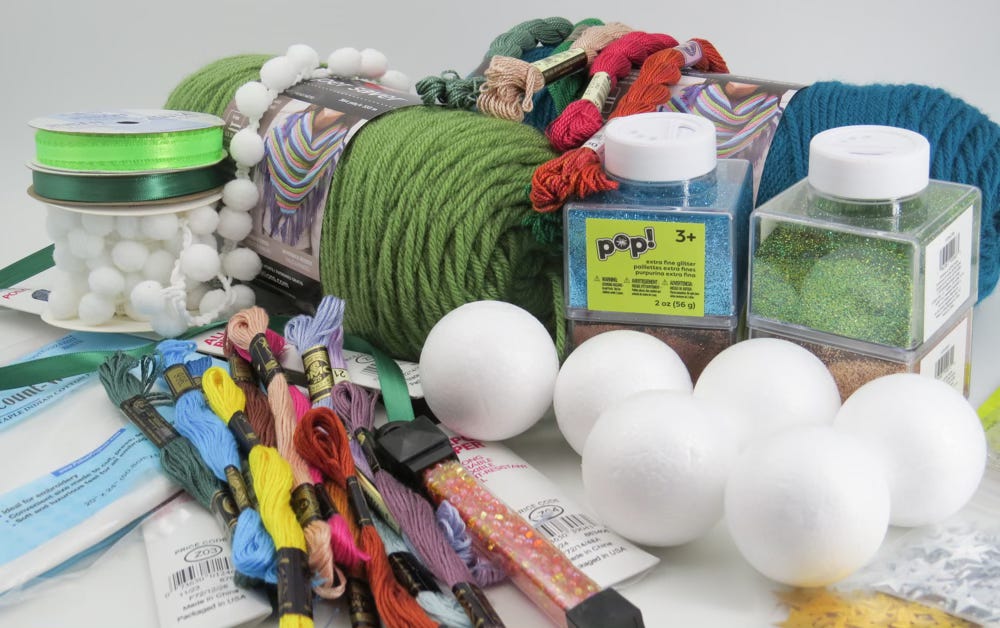JoAnn’s is going out of business.
By now, this is old news. Millions of quilters, needleworkers, scrapbook enthusiasts are over the initial shock and the story is barely a topic of conversation anymore. Now that I’m over panic shopping at three of the four stores here in central Ohio, I’ve had some time to consider larger questions beyond the initial quandary of where to shop when I need another skein of DMC 221.
It’s an old American story: An individual has a retail vision and grows that vision to include more than 800 stores across the United States. The company hits a financial snag – a pandemic, supply chain problems, retail competition – and sells to a private investment firm that assumes its debt. But the new owner hasn’t invested for the emotional value of the product; they invested to make money. And when that doesn’t happen quite as quickly as planned, the company faces a tangle that just can’t be unraveled.
JoAnn Fabrics and Crafts entered bankruptcy proceedings in March 2024, then reorganized out of bankruptcy in August. By January 2025, the Ohio company declared bankruptcy again, stating first it would shutter 500 stores to “right size.” In February, CEO Michael Prendergast announced JoAnn was closing all its stores. For an account of what went wrong, read Lila MacLellan’s excellent article in Fortune.
Across the country, 19,000 jobs will be lost. And nobody seems to give a damn, except the soon-to-be-let-go employees and the customers who regularly patronized the stores. It isn’t the sort of business that would be attractive for a government bail-out.
Shopping at Michaels or Hobby Lobby, the two general-purpose craft stores still operating near my home, doesn’t quite solve the immediate problems textile artists will face in the coming years. Hobby Lobby’s egregious and wrong-headed employee health care policies make it easy to boycott that company. Michaels presents an alternative, although Michaels stores have a much smaller footprint than JoAnn’s, offering neither the volume nor the selection. I have heard rumors that Michaels plans to expand its fabric inventory – but with a mere two short aisles of fabric currently on offer, the store has a long way to go to match JoAnn’s massive fabric department that included garment, quilt, outdoor, and upholstery fabric, not to mention all the notions necessary for dressmaking, tentmaking or recovering Granny’s old couch.
The bigger questions go far beyond where stitchers will shop for crafting supplies.
Back in the day, certain members of the family poo-pooed Aunt Janice’s purchases of quilt kits. Every year when she traveled north for the holidays, she brought along a shopping itinerary that included visits to Frank’s Nursery and Crafts. I’ll admit to being one of the purists who tut-tutted about kit quilts. It seemed like cheating to cut out pre-printed applique patches for sewing on to a sheet of cotton, also helpfully pre-printed with placement instructions and quilting lines. The fabric was poor quality -- although having repaired two of her kit quilts, I have to admit each has held up remarkably well – in both cases the repair was necessitated by cheap thread, not cheap fabric.
Those two kit quilts have been passed along to family members who barely remember Aunt Janice, now possessed by a generation of people thrice removed from Janice. The quilts are treasured heirlooms, made by a quilter whose stitchery legend looms large in family lore.
As I peruse the growing collection of Bicentennial needlework or watch FaceBook groups devoted to Paragon and Bucilla patterns, I have to remember that originality is only one factor for determining value and desirability. Those shifting measures are also determined by what a textile reveals about its era of creation, the material used in creation, the condition of the surviving artifact, and what we can learn about provenance. But let’s factor in the hands of the maker, too. Both her physical and psychic fingers plying fabric and thread – the genius of creativity lies not with the designer, not with the kit or its country of manufacture, and not with the means of procurement. The genius of creative stitching lies in the hands of the maker.
There is newfound appreciation for kit quilts, pre-stamped embroidery patterns, and the fuzzballs once available at stores like Frank’s Nursery and JoAnn Fabric and Crafts. At an estate sale just this past week, I chatted with a man who was enthralled to find an absurdly hideous handmade throw signed and dated by the maker – he had known the woman and was eager to honor her memory by cherishing her blanket. Certainly as my generation ages out, (ages up?) the things we made in the 1970s have entered the realm of collectible. And fifty years from now, the things I am stitching today, with supplies purchased at JoAnn’s, may be collectible, too. I hope that some of my stitching become heirlooms, passed on through the generations, another part of family lore – “Grandma Foley made this, Cousin Patty made that. It seemed like she was always making something….”
The larger question is not where I can go now to find extra DMC 221 – there are plenty of places in town to buy embroidery floss. Crikey, I can even buy embroidery floss and quilt fabric through Amazon, so I should quit whining, right?
There was and still is, at least for the moment, a community of makers centered around JoAnn’s. From the salesclerks to the shoppers waiting in line to have fabric cut, I could always count on having or overhearing conversations about what would be made with the items being purchased. Most of the projects described were intended as gifts for grandchildren or nursing home residents, for Christmas stockings, Quilts of Valor, yarn bombs, or Pussy Hats.
Lately, we’re sharing our grief with one another. Grieving over a retail establishment may seem petty in these days of coerced job loss at the highest levels. But for quilters and crafters and seamstresses, the grief for JoAnn’s is real.
Where will I find such a community again? Not on Amazon.com. And where will the heirlooms of tomorrow originate? Maybe on Amazon, but I doubt it. Even the vast offerings of Amazon cannot match the hereditary possibilities found at JoAnn Fabric and Crafts. And that’s the real loss in its bankruptcy – the loss of community and the loss of ready access to the supplies or kits we need to create our heirlooms.
I don’t intend to shop for needlework supplies on Amazon. I will more frequently patronize Michaels and a little embroidery store across town. Meanwhile, it’s been a couple weeks since I visited JoAnn’s going-out-of-business sale – so I’m headed that way now!





